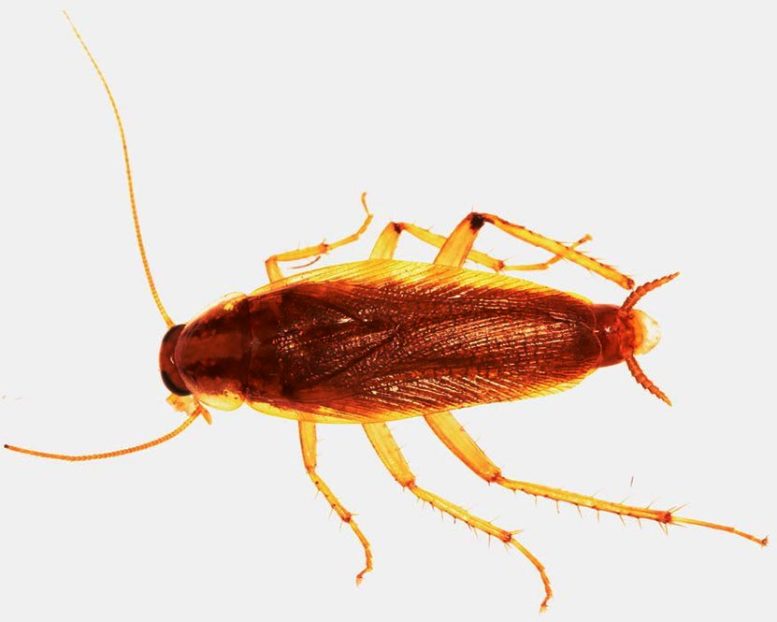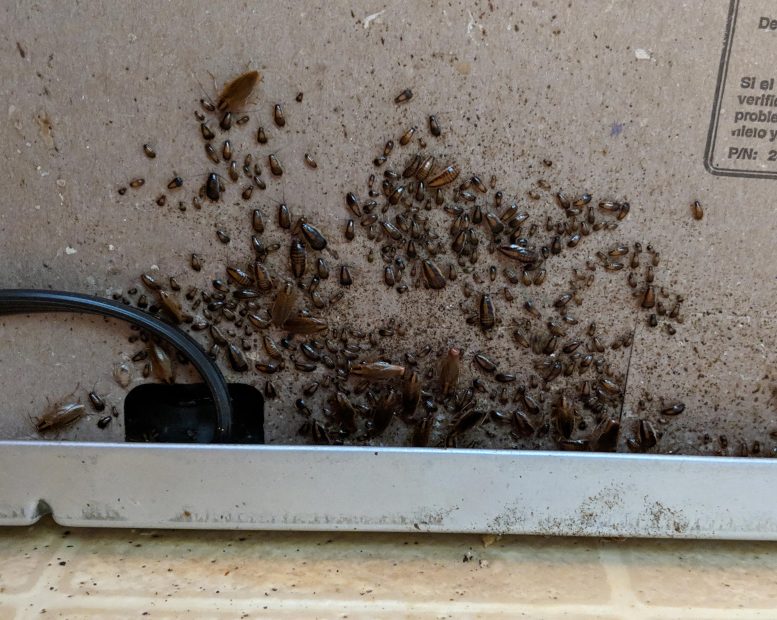
Consumer insecticide sprays provide “little to no value” against German cockroach infestations, researchers say.
A study has found that most consumer insecticide sprays are ineffective against German cockroaches, with over 80% of these pests surviving exposure to common pyrethroid-based products. Researchers emphasize the need for better testing standards and more effective pest control strategies, including integrated pest management.
Ineffectiveness of Common Insecticide Sprays
A common variety of consumer insecticide sprays is mostly ineffective and of “little to no value” in eliminating cockroach infestations, a new study shows.
Residual insecticides are designed to be sprayed on surfaces where cockroaches are likely to appear, exposing them to the toxic ingredient when they move across the surface later. However, laboratory testing by researchers at the University of Kentucky and Auburn University shows that the residues have little effect on German cockroaches (Blattella germanica), a primary species infesting homes and buildings around the world.

The study found that liquid and aerosol sprays using pyrethroid insecticides killed less than 20 percent of German cockroaches that were exposed to sprayed surfaces for 30 minutes. Moreover, even when cockroaches were confined to the sprayed surfaces, most products took eight to 24 hours to kill the cockroaches, with some taking up to five days. Published today (August 14) in the Journal of Economic Entomology, the study tested the sprays on German cockroaches that had been collected from real-world infestations, where the insects have evolved resistance to pyrethroids, previous research shows.
Challenges in Cockroach Control
“If residents do not have access to effective professional pest control or consumer solutions, they continue to be impacted by the effects of an infestation, including the health risks associated with cockroach allergens. Home is where people should be able to relax and feel comfortable,” says Johnalyn Gordon, Ph.D., lead author on the study and a postdoctoral associate at the University of Florida.
Gordon conducted the study while a graduate research assistant at the University of Kentucky in the lab of Zach DeVries, Ph.D., assistant professor of urban entomology and senior author on the study. Their study was supported by a grant from the U.S Department of Housing and Urban Development.

Cockroach control, while challenging at times, is obtainable, the researchers say, but it typically is time intensive and costly in terms of products applied. A key problem is that German cockroaches are almost universally resistant to pyrethroids.
“Due to the frequent use of pyrethroid-based residual products, it is very likely that German cockroaches inside of homes will have some degree of pyrethroid resistance,” Gordon says. “To the best of our knowledge, a pyrethroid-susceptible German cockroach population has not been documented from the field in decades.”
The Problem With Current Insecticide Testing
However, current requirements from the U.S. Environmental Protection Agency do not require insecticide products to be tested on cockroaches recently collected from the field or with demonstrated insecticide resistance.
“Hopefully studies like this one can drive changes in product testing and evaluation, so that labels accurately reflect the level of control these products can provide,” Gordon says.
Surface Type and Cockroach Behavior
Additional factors likely contribute to the poor performance of the residual spray products, such as surface type and cockroach behavior. Gordon and colleagues tested the sprays on painted drywall, ceramic tile, and stainless steel and found that they performed significantly worse on drywall. Even a population of cockroaches without resistance to pyrethroids that was included in the study was minimally affected by the residual sprays on drywall. “This suggests that how porous a surface is may have a significant impact on product efficacy,” Gordon says. “Given common applications of residual insecticides along baseboards, reduced efficacy on painted drywall was a particularly striking finding.”
Meanwhile, cockroaches are unlikely to come to rest for extended periods on surfaces treated with insecticides, both because they are often on the move and because they may actively avoid them. A separate study in DeVries’ lab published last year found resistant German cockroaches will not remain in contact with pyrethroid-treated surfaces for an extended period time, if given the choice.
Combined, these factors paint a dim picture for cockroach control via insecticide sprays. “Based on our results, pyrethroid-based DIY products are likely to fail against German cockroaches inside the home, especially if they are being used as residual products,” Gordon says.
Promising Alternatives to Sprays
More promising DIY options for cockroach control include gel or liquid baits, which attract roaches to a food source laden with a slow-acting insecticide, Gordon says. Ideally, consumers could also have access to affordable professional pest-control services that take a multipronged approach known as integrated pest management, or IPM. However, this is often not the case for residents of low-income, multi-family housing, where cockroach infestations are often stubbornly persistent.
“There is a strong base of knowledge and research on how we can control cockroaches, but there are numerous economic and procedural barriers that mean that this control is not occurring in these areas, arguably where it is the most needed,” Gordon says. “Targeting improved technologies that can close these management gaps is really critical to achieving accessible pest management, whether that is through different active ingredients and modes of action, formulations, or product-deployment strategies.”
Reference: “Common consumer residual insecticides lack efficacy against insecticide-susceptible and resistant populations of the German cockroach (Blattodea: Ectobiidae)” by Johnalyn M Gordon, Marla J Eva, Sudip Gaire, Arthur G Appel and Zachary C DeVries, 14 August 2024, Journal of Economic Entomology.
DOI: 10.1093/jee/toae158
1 Comment
Then invent an AI cockroach to replace them. That might work.